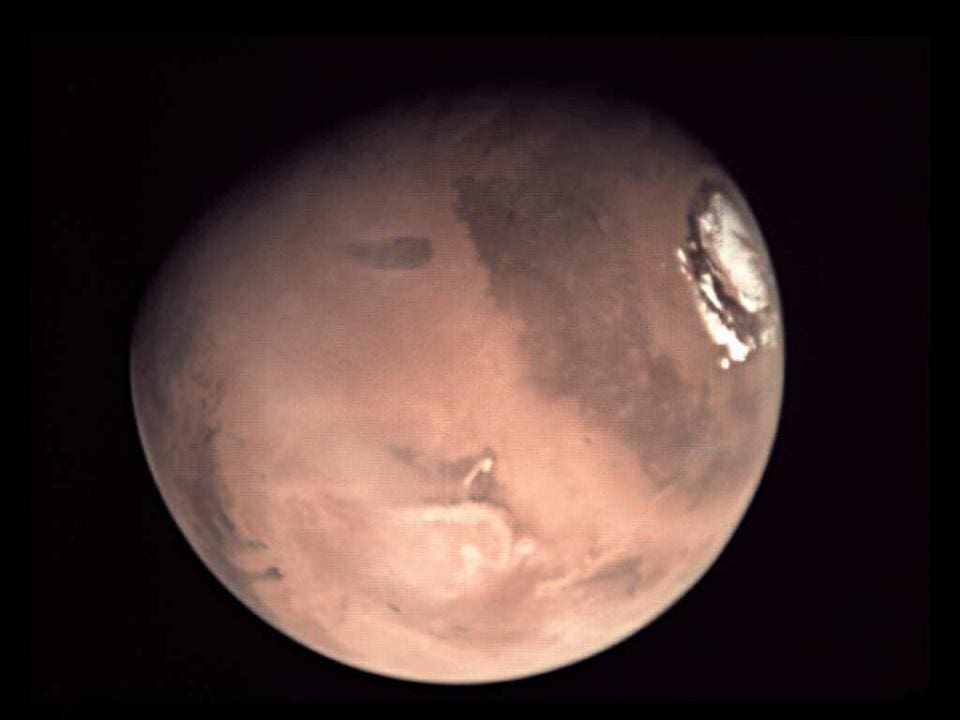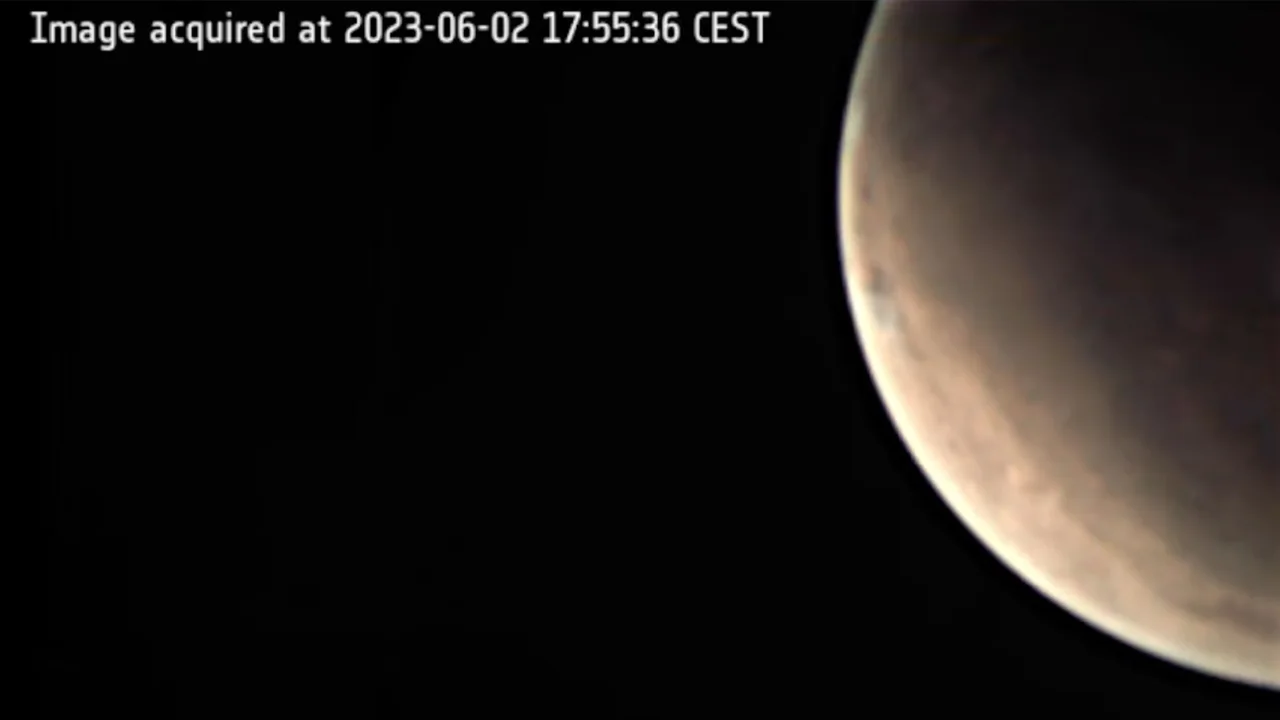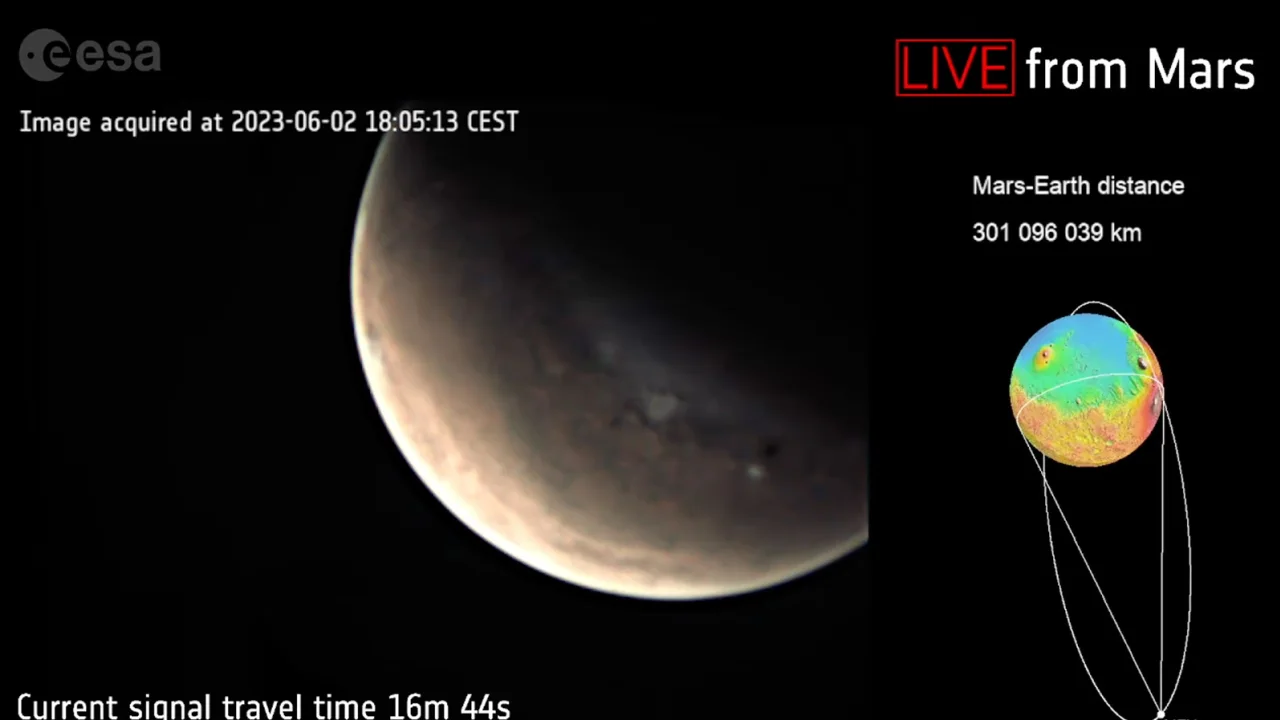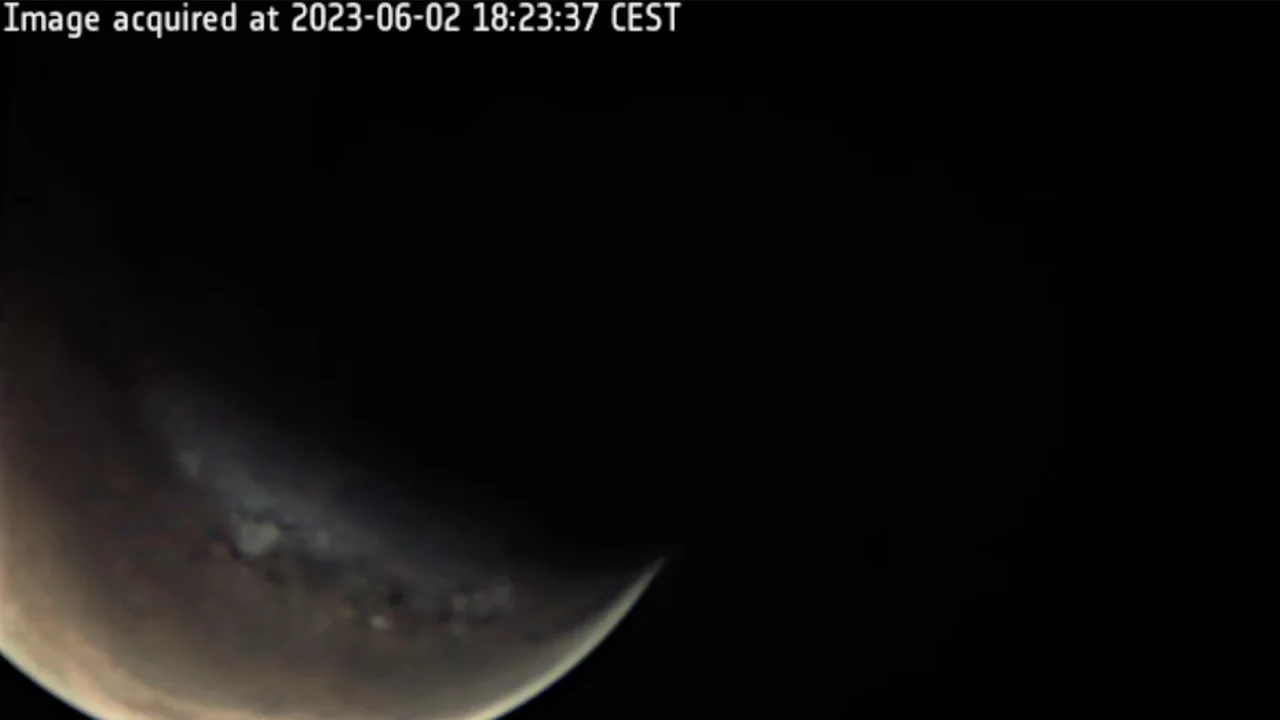In an unprecedented event, the European Space Agency (ESA) has shared live images of Mars with viewers on Earth. The historic footage was streamed on YouTube, ESA’s Twitter account, and under the hashtag #MarsLIVE, offering a never-before-seen perspective of the Red Planet.

The live stream commemorated the 20th anniversary of the Mars Express orbiter’s launch, a mission undertaken by the ESA to capture three-dimensional images of Mars’ surface in greater detail.

“Normally, we see images from Mars and know that they were taken days before,” said James Godfrey, spacecraft operations manager at ESA’s mission control center in Darmstadt, Germany. “I’m excited to see Mars as it is now — as close to a Martian ‘now’ as we can possibly get!”

Previously, images of Mars were not transmitted live. Data and observations were often recorded when a spacecraft was not in direct contact with Earth and stored until they could be sent back. The time it takes for these messages to travel through space can range from 3 to 22 minutes, depending on the planets’ positions in their orbits around the sun.

ESA estimated that it would take approximately 17 minutes for the light needed to form the images to travel from Mars to Earth, plus an additional minute for the signals to pass through ground-based wires and servers to initiate the live stream.
However, the agency acknowledged prior to the event that “exact travel times for signals on the ground remain a little uncertain” as this was the first attempt of its kind.

The live images featured a bright Mars with no visible stars in the background. Colin Wilson, a project scientist at ESA, explained that the planet’s brightness obscured surrounding stars from the particular angle at which the spacecraft was capturing images.
Wilson added that the Mars Express spacecraft is able to view much of the cosmos, which is crucial for navigation. The spacecraft uses an onboard map and star imaging to orient itself in space, similar to how humans have navigated oceans for centuries.

The hour-long live stream was expected to display new views of Mars approximately every 50 seconds. However, transmissions were interrupted at times due to bad weather at a ground station near Madrid.
Viewers might also have noticed that Mars appeared less red than anticipated. Jorge Hernández Bernal, a member of the Mars Express’s visual monitoring camera team, explained during the livestream that the planet’s appearance was akin to an iPhone-captured image rather than its true appearance to the naked eye. He attributed this discrepancy to the complexities of color perception and the image processing required to remove “noise” or unwanted disturbances.

The live stream concluded after an hour when Mars Express moved too far from Mars to continue capturing images. ESA scientists have promised additional updates on Twitter.

